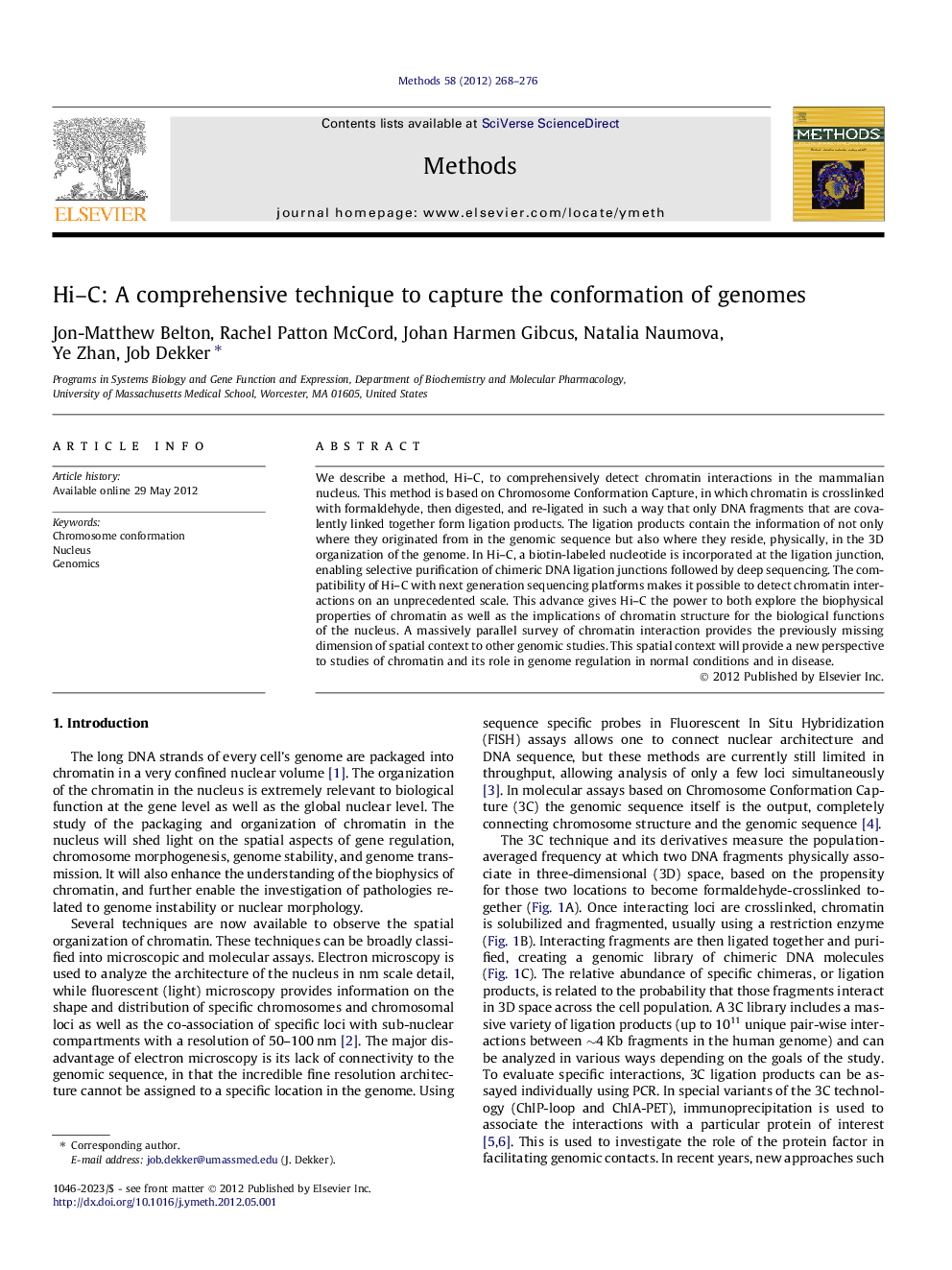| Article ID | Journal | Published Year | Pages | File Type |
|---|---|---|---|---|
| 1993818 | Methods | 2012 | 9 Pages |
We describe a method, Hi–C, to comprehensively detect chromatin interactions in the mammalian nucleus. This method is based on Chromosome Conformation Capture, in which chromatin is crosslinked with formaldehyde, then digested, and re-ligated in such a way that only DNA fragments that are covalently linked together form ligation products. The ligation products contain the information of not only where they originated from in the genomic sequence but also where they reside, physically, in the 3D organization of the genome. In Hi–C, a biotin-labeled nucleotide is incorporated at the ligation junction, enabling selective purification of chimeric DNA ligation junctions followed by deep sequencing. The compatibility of Hi–C with next generation sequencing platforms makes it possible to detect chromatin interactions on an unprecedented scale. This advance gives Hi–C the power to both explore the biophysical properties of chromatin as well as the implications of chromatin structure for the biological functions of the nucleus. A massively parallel survey of chromatin interaction provides the previously missing dimension of spatial context to other genomic studies. This spatial context will provide a new perspective to studies of chromatin and its role in genome regulation in normal conditions and in disease.
